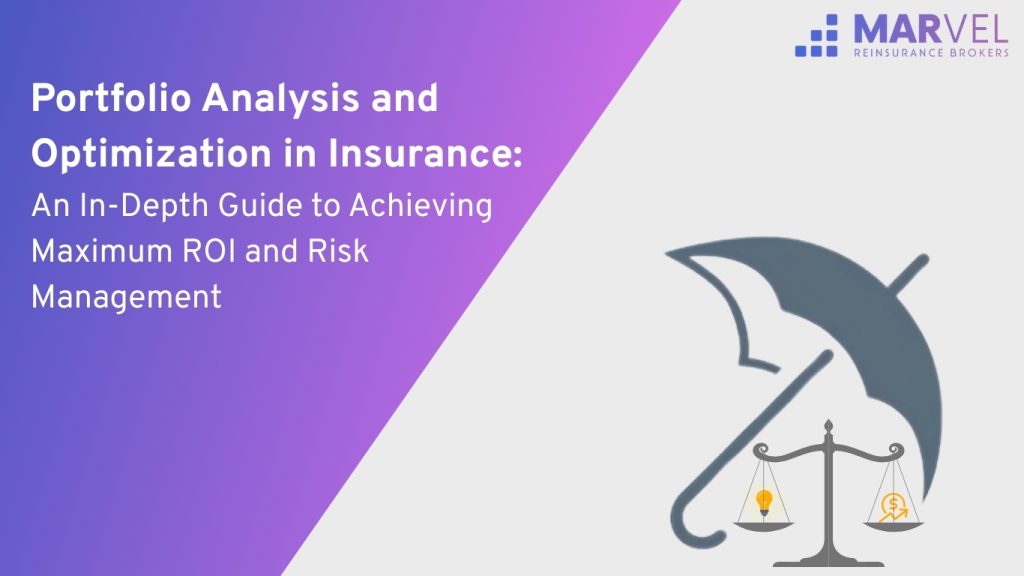
Successful insurance business operation relies on effective insurance portfolio management in today’s competitive environment. Conditions in the marketplace are more uncertain and competitive than ever before. Regulations constantly evolve, and the needs of customers change at an alarming rate. In this scenario, insurers require strong tools with which to make intelligent decisions. Successful analysis and constant optimization increase profits and minimize risks, helping insurers become competitive. State-of-the-art technological capabilities create increased data analysis and business awareness. Through these methods, adaptation, growth, and competitiveness can be improved.
Portfolio Analysis in Insurance
What is Portfolio Analysis in Insurance?
Through portfolio analysis, insurers assess their mix of policies and business divisions. It shows the performance of each component, its related risk, and the potential for growth. It’s similar to a money report for assets in a bank. It is the way one views the whole picture of what one has and how it performs. It helps insurers to identify good spots and sense the danger beforehand.
Key Components of Insurance Portfolio Analysis
In analyzing a portfolio, several elements come into play:
- Underwriting performance, including premium income and loss ratios.
- Statistics on claims, frequency, and severity.
- Customer segments and their behavior.
- Environmental change in market situations, i.e., demand profiles and competitiveness.
- Regulatory rules that can limit or guide business.
Why Data-Driven Insights Matter
The art is to leverage data in an impactful manner. Big data analysis has the potential to predict coming dangers and sense high-margin portions. For example, insurers today are using machine learning to analyze patterns that individuals are not adept at recognizing. This gives them enhanced precision with pricing on coverage and avoiding sticky spots. Progressive Insurance, as an example, uses predictive models to decide whether to insure whom and how much, reducing loss and increasing profit.
Techniques and Tools for Portfolio Analysis
Quantitative Techniques Used in Portfolio Measurement
Information enables insurers to match various aspects of their business:
- Risk measures, such as Return on Equity (ROE) or loss ratios, quantify risk with.
- Correlation analysis determines if the several segments minimize risk.
- Use indices to ascertain whether the portfolio is well-diversified or one-sidedly inclined towards a given area.
Upper-end Analytical Tools and Techniques
Technological tools increase analytical capability:
- Machine learning and artificial intelligence facilitate the detection of risk faster.
- Actuarial models simulate future claims.
- Business intelligence software offers portfolio well-being real-time reporting.
Portfolio Optimization Strategies in Insurance
Risk Diversification and Asset Allocation
Diversifying risks across various regions decreases exposure. A blend of product types, geographies, and customer bases makes it stable. Similar to a balanced diet—various components functioning together maintains health.
Pricing and Underwriting Adjustments
Information makes it possible to price more efficiently. Real-time predictive models provide insurers with responsive adjustment capabilities during market fluctuations. Flexible underwriting rules can enhance and maximize margin on profit. For instance, stricter terms for high-risk consumers avoid losses.
Portfolio Rebalancing and Product Innovation
Regularly reviewing keeps the portfolio in good health. When one sector lags, insurers can rebalance their focus. Offering new insurance products in response to market trends can also open up new sources of revenue.
Practical Tips:
- Arrange periodic portfolio reviews.
- Conduct scenario analysis to get ready for multiple scenarios.
- Tighten coordination between teams—underwriting, analytics, and sales— for better decision-making.
Regulatory and Market Considerations
Impact of Regulations
Like solvency rules direct the level of risk insureds can take. Regulations exist to protect consumers but limit options. Regulatory constraints and portfolio maximization pose a persistent insurer dilemma. An example is Solvency II in the EU, requiring specific risk measurement, which impacts the way companies manage exposure to risk.
Market Trends and External Factors
External drivers like economic cycles, global warming, or technology disruption drive risk. Insurers have to act quickly. More natural catastrophes might force insurers to re-balance books on property or increase premiums.
Real-World Example
European insurers that complied with Solvency II regulations began rebalancing their insurance products and investments. They are more careful with diversified assets, stress tests, and capital buffers. The adjustment keeps them compliant and protects their financial health.
Measuring Success and Ongoing Improvement
Key Performance Indicators
It must be monitored closely. Ratios of loss, policy retention, and new business development provide the performance measure of the portfolio. Watching for these early warnings reveals issues earlier.
Feedback Loops and Validation of Data
Verify the data used to provide current and correct information. Watch models frequently so that bad choices are not being made because flawed models are used. Sales, claims, and customer service provide feedback to further refine strategies.
Future Outlook
Technological advancements in AI, large data, and regulatory technology enable insurers to process portfolios faster and more accurately. Failure to keep pace with technological innovation and market shifts poses significant operational risks. Be ready to adapt at all times, revise models, and research new trends.
Conclusion
Sound analysis and strategic tuning are crucial to insurance firms that seek to expand profits and contain risks. Insurers can make more intelligent decisions that serve both the firm and clients with the appropriate tools, information, and procedures. Technology adoption and learning on a constant basis is the future. Adopting this helps insurers remain resilient, competitive, and prepared for anything the future brings. Begin today—take a look at your portfolio, actively use data, and change your strategy to thrive.

